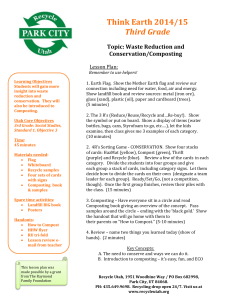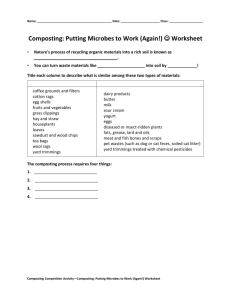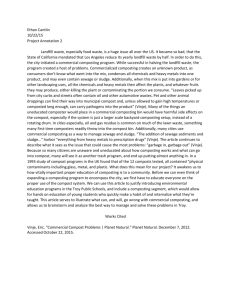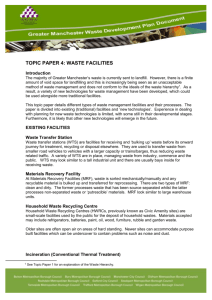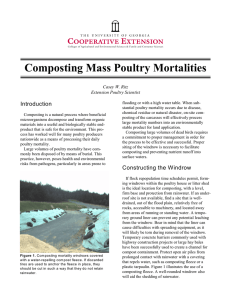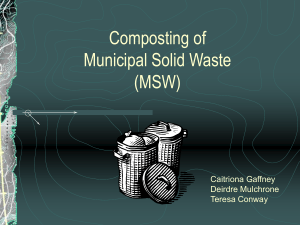Composting and tyre shredding overview
advertisement
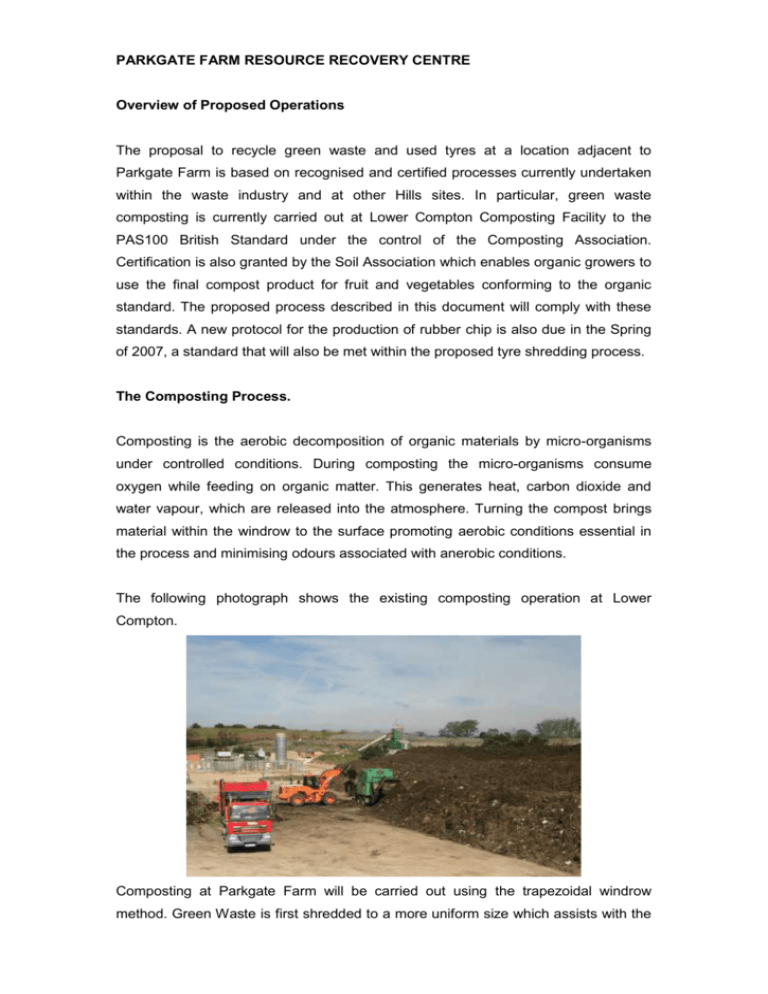
PARKGATE FARM RESOURCE RECOVERY CENTRE Overview of Proposed Operations The proposal to recycle green waste and used tyres at a location adjacent to Parkgate Farm is based on recognised and certified processes currently undertaken within the waste industry and at other Hills sites. In particular, green waste composting is currently carried out at Lower Compton Composting Facility to the PAS100 British Standard under the control of the Composting Association. Certification is also granted by the Soil Association which enables organic growers to use the final compost product for fruit and vegetables conforming to the organic standard. The proposed process described in this document will comply with these standards. A new protocol for the production of rubber chip is also due in the Spring of 2007, a standard that will also be met within the proposed tyre shredding process. The Composting Process. Composting is the aerobic decomposition of organic materials by micro-organisms under controlled conditions. During composting the micro-organisms consume oxygen while feeding on organic matter. This generates heat, carbon dioxide and water vapour, which are released into the atmosphere. Turning the compost brings material within the windrow to the surface promoting aerobic conditions essential in the process and minimising odours associated with anerobic conditions. The following photograph shows the existing composting operation at Lower Compton. Composting at Parkgate Farm will be carried out using the trapezoidal windrow method. Green Waste is first shredded to a more uniform size which assists with the composting process. It is then formed into long piles, approximately 2.5m high and 4m wide which are turned once a week. Turning the windrows ensures that all material is equally exposed to the air at the outer surface promoting high microorganism activity which raises temperatures within the pile needed to kill pathogens, fly larva and weed seeds. The length of the composting process is determined by the types of materials in the pile and the weather conditions, but it is expected that each windrow would have a life of 10 – 12 weeks. The compost is then left to mature for up to 4 weeks before being screened to remove any over sized materials, which are reshredded. Compost will either be bagged for sale to the general public though the network of household recycling centres or sold in bulk to landscapers and growers. Tyre Shredding Shredding waste car tyres is now becoming widespread in the UK for landfill operators looking to reduce the amount of virgin aggregate used in landfill cell engineering. In an average landfill cell up to 7,500 tonnes per annum of virgin aggregate would be required to provide a basal drainage blanket, as required by the site Permit. However, following stringent tests recycled rubber has been approved by the Environment Agency as an alternative drainage material. Tyres will be delivered in bulk haulage vehicles and loaded directly into a single shaft shredder. Rubber shred ranging from 100mm – 200mm in size is produced in a single pass and discharged into a storage bay via a discharge conveyor. The shredder is fitted with a spray bar over the hopper to keep the material cool and assist in the efficiency of the machine. The photograph below shows a typical tyre shredder similar to the equipment proposed for Parkgate Farm Resource Recovery Centre. A tele-handler loader will carry out the shredder loading duties and also keep the stockpile tidy. Once the initial stockpile area is full the product will be transported to the main storage area on the concrete slab. Once a year the area is cleared with shred being delivered to the landfill cell during the summer.
